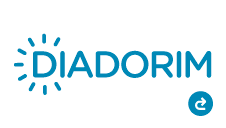Sinais Internacionais e a formação para intérpretes de Sinais Internacionais
DOI:
https://doi.org/10.26512/belasinfieis.v8.n1.2019.12984Palavras-chave:
Sinais Internacionais, Interpretação de Sinais Internacionais, Intérprete Surdo, FormaçãoResumo
Sinais Internacionais (SI) não é considerada como uma língua oficialmente, pois ela não tem uma comunidade de origem definida. Entretanto, é muito bem aproveitada como uma espécie de língua franca equidistante das diversas línguas de sinais de cada país, em encontros internacionais de surdos. SI não pode se comparar com Esperanto, como uma língua não planejada e, também, não pode se definir como Gestuno que é referenciado aos gestos, mas pode ser usada em encontros internacionais. A partir de 1987, começou a interpretação de Sinais Internacionais no Congresso de Federação Mundial de Surdos (WFD), e desde então, foi desenvolvida até hoje. A Associação Mundial de Intérpretes de Língua de Sinais (WASLI) oferece um credenciamento provisório para os intérpretes que têm experiência da interpretação de SI de no mínimo três anos. O surdo pode atuar como um intérprete profissional tanto quanto os ouvintes. Os intérpretes surdos passaram a ser reconhecidos na comunidade surda a partir de 1993 quando iniciaram nas conferências (Campello, 2014), no Brasil, onde ainda não havia formação específica na interpretação para os surdos, por isso, precisamos fomentar mais pesquisas e investir na qualificação e formação desses profissionais.
Referências
ADAM, R. Language contact and borrowing. In: PFAU, R.; STEINBACH, M.; WOLL, B. (Eds.). Sign language: An international handbook. Berlin: De Gruyter Mouton, 2012. p. 841-861.
ADAM, R. et al. Deaf Interpreters at Work. Washington, DC: Gallaudet University, 2014.
BAKER-SHENK, C.; COKELY, D. American Sign Language. A Student Text Units 10-18. Washington, DC: Gallaudet University Press, 1991.
BOUDREAULT, P. Deaf Interpreters. In: JANZEN, T. (Ed.). Topics in signed language interpreting. Amsterdam: Benjamins, 2005. p. 323-356.
BRASIL. Decreto n. 5626, de 22 de dezembro de 2005. Regulamenta a Lei n. 10.436, de 24 de abril de 2002, que dispõe sobre a Língua Brasileira de Sinais ”“ Libras, e o art. 18 da Lei n. 10.098, de 19 de dezembro de 2000. Disponível em: http://www.planalto.gov.br/ccivil_03/_ato2004-2006/2005/decreto/d5626.htm. Acesso em: novembro de 2018.
BRITISH DEAF ASSOCIATION (BDA). Gestuno: International sign language of the deaf. The revised and enlarged book of signs agreed and adopted by the Unification of Signs Commission of the World Federation of the Deaf. London: British Deaf Association, 1975.
BYUN, K. et al. First Encounters: Repair Sequences in Cross-Signing. Topics in Cognitive Science, p. 1-21, 2017.
CAMPELLO, A. R. e S. Intérprete surdo de língua de sinais brasileira: o novo campo de tradução / interpretação cultural e seu desafio. Cadernos de Tradução, Florianópolis, v. 1, n. 33, p. 143-167, jul. 2014. Disponível em: https://periodicos.ufsc.br/index.php/traducao/article/view/2175-7968.2014v1n33p143. Acesso em: novembro de 2018.
CRASBORN, O.; HIDDINGA, A. Signed languages and globalization. Language in Society, Cambridge, p. 483-505, 2011.
FORESTAL, E. et al. Examples of a Deaf Interpreter's Work. Washington, DC: Gallaudet University, 2012. Disponível em: http://digitalcommons.unf.edu/asleimats/50/. Acesso em: novembro de 2018.
HANSEN, M. What Is International Sign? The Linguistic Status of a Visual Transborder Communication Mode. In: ROSENSTOCK, R.; NAPIER, J. (Eds.). International Sign: Linguistic, Usage, and Status Issues. Washington, DC: Gallaudet University Press, 2016. p. 15-31.
HESSMANN, J. et al. Developing and transmitting a shared interpreting research ethos: EUMASLI ”“ A case study. In: NICODEMUS, B.; SWABEY, L. (Eds.). Advances in Interpreting Resarch: Inquiry in Action. [S.l.]: Benjamins Translation Library, 2011. p. 177-198.
LUCHI, M. Interpretação de descrições imagéticas: onde está o léxico? Dissertação (Mestrado em Estudos da Tradução) ”“ UFSC, Florianópolis, 2013.
MCKEE, R.; NAPIER, J. Interpreting into International Sign Pidgin: An analysis. Journal of Sign Language and Linguistics, p. 27-54, 2002.
MESCH, J. Perspectives on the Concept and Definition of International Sign. Helsinque: WFD, 2010. Disponível em: http://wfdeaf.org/wp-content/uploads/2016/11/Perspectives-on-the-Concept-and-Definition-of-IS_Mesch-FINAL.pdf. Acesso em: novembro de 2018.
MOODY, B. The role of International Sign Interpreting in today’s world. In: ROY, C. B. (Ed.). Diversity and community in the worldwide Sign Language Interpreting Profession: Proceedings of the second WASLI Conference, held in Segovia, Spain, 2007. [S.l.]: Douglas McLean, 2008. p. 19-33.
PEREIRA, M. C.P. Interpretação interlíngue: as especificidades da interpretação de língua de sinais. Cadernos de Tradução, Florianópolis, v. 1, p. 135-156, 2008.
PERLIN, G.; MIRANDA, W. Surdos: O narrar e a política. Ponto de Vista, Florianópolis, n. 5, p. 217-226, 2003.
REIS, F. O Surdo como intérprete. In: XII CONGRESSO INTERNACIONAL E XVIII SEMINÁRIO NACIONAL DO INES, 2013, Rio de Janeiro. Anais... Rio de Janeiro: INES, Departamento de Desenvolvimento Humano, Científico e Tecnológico, 2013.
RODRIGUES, C.; BEER, H. Os Estudos da Tradução e da Interpretação de Línguas de Sinais: Novo Campo Disciplinar Emergente? Cadernos da Tradução, Florianópolis, p. 17-45, 2015.
ROSENSTOCK, R.; NAPIER, J. Introduction: To International Sign or not to International Sign? That Is the Question. In: ______. International Sign: Linguistic, Usage and Status Issues. Whashington, DC: Gallaudet University Press, 2016. p. 1-12.
SILVEIRA, B. Intérprete Surdo: conquistando espaço no campo de conferências no Brasil. In: ALBRES, N. de A. (org.). Libras e sua tradução em pesquisa: interfaces, reflexões e metodologias. Florianópolis: Biblioteca Universitária UFSC, 2017. p. 14-37.
SHENEMAN, N.; COLLINS, P. F. The Complexities of Interpreting International Conferences: A Case Study. In: ROSENSTOCK, R.; NAPIER, J. (Eds.). International Sign: Linguistic, Usage and Status Issues. Whashington, DC: Gallaudet University Press, 2016. p. 167-191.
STONE, C. Toward a Deaf Translation Norm. Whashington, DC: Gallaudet University, 2009.
STONE, C.; RUSSELL, D. Interpreting in International Sign: Decisions of Deaf and Non-Deaf Interpreters. In: CONFERENCE OF THE WORLD ASSOCIATION OF SIGN LANGUAGE INTERPRETERS (WASLI), 4., 2011, Durban, South Africa. Proceedings… Durban: WASLI, 2011. p. 100-118.
SUPALLA, T.; WEBB, R. The grammar of International Sign: A new look at pidgin languages. In: EMMOREY, K.; REILLY, J. S. (Eds.). Language, gesture and space. Mahwah, NJ: Erlbaum, 1995.
WFD-WASLI International Sign Interpreter Accreditation Handbook. [S.l.]: WFD; WASLI, 2016. Disponível em: https://2tdzpf2t7hxmggqhq3njno1y-wpengine.netdna-ssl.com/wp-content/uploads/2017/02/WFD-WASLI-IS-Interpreter-Accreditation_Handbook-31.8.pdf. Acesso em: novembro de 2018
WHYNOT, L. Telling Showing, and Representing: Conventions of the Lexicon in International Sign Expository Text. In: ROSENSTOCK, R.; NAPIER, J. (Eds.). International Sign: Linguistic, Usage and Status Issues. Washington, DC: Gallaudet University Press, 2016. p. 35-64.
WIT, M. de; SLUIS, I. International Sign: An Exploration into Interpreter Preparation. In: ROSENSTOCK, R.; NAPIER, J. (Eds.). International Sign: Linguistic, Usage and Status Issues. Washington, DC: Gallaudet University Press, 2016. p. 105-135.
WORLD ASSOCIATION OF SIGN LANGUAGE INTERPRETERS (WASLI). International Sign Definition. 2014. Disponível em: http://wasli.org/international-sign-definition. Acesso em: novembro de 2018.
ZESHAN, U. “Making meaning”: Communication between sign language users without a shared language. Cognitive Linguistics, v. 26, n. 2, p. 211-260, 2015.
Downloads
Publicado
Edição
Seção
Licença
Dado ao acesso público desta revista, os textos são de uso gratuito, com obrigatoriedade de reconhecimento da autoria original e da publicação inicial nesta revista
A revista permitirá o uso dos trabalhos publicados para fins não comerciais, incluindo direito de enviar o trabalho para bases de dados de acesso público. As contribuições publicadas são de total e exclusiva responsabilidade dos autores.
Os autores, ao submeterem trabalhos para serem avaliados pela revista Belas Infiéis, mantêm os direitos autorais e concedem à revista o direito de primeira publicação, sendo o trabalho licenciado sob a Creative Commons Attribution License Atribuição 4.0 Internacional (CC BY 4.0).



















